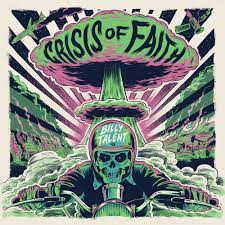Hey all, more question time. What was the “push” that made you set up your servarr instance? For me, my wife is from a different country than I am. We both paid for netflix but due to region lock could never watch anything together without piracy. I realized very quickly that it was a worthless endevour to keep going with the dance so I just figured fuck it, Ill go all in.
Usability. I have no problem paying for content (my server + expenses would probably pay for a lifetime of various subscriptions), but having it consolidated in one location is a lifestyle improvement.
Amen to that. My wife is a huge movie buff and if she watches several movies a day. It would be so fuckin annoying for her to have to bounce to every single service just to watch one thing.
The push for me was the constant fragmentation of services I paid for and content I enjoyed disappearing (eg. Star Trek TNG and The Office on Netflix).
I finally decided to attack the problem of my degraded ZFS Pool and replace all my HDD’s in my ZRAID Pool with larger ones, then migrate from TrueNAS Core to TrueNAS Scale for my NAS. I wanted to take full advantage of the Kubernetes/Docker capabilities in Scale. It was nice to finally get everything organized in containers instead of FreeBSD Jails that end up being a PITA to update the underlying OS on down the road when they bump the FreeBSD major version.
It was also an opportunity to start fresh and make sure my Plex DB was saved outside the container so that even if I migrated or spun up a new container, the DB would still be intact. From there, I wanted a better way to clean up my existing library, manage ingestion of content better, and make the process of managing everything easier. So obviously Sonarr/Radarr were the solution for me. I actually still use Jackett over Prowlarr though, as it is working just fine for me and I don’t see much reason to change.
Everything comes together really nicely on mobile as well with nzb360. Combine that with Tailscale for easy/seamless access and it’s been a pretty smooth sailing setup so far this past year.
I was doing everything manually and it was just too much work. I’m talking manually renaming files and everything. I very slowly learned to use the arr’s and life has been much easier lol. Huge thanks to all the YouTube guides because I was absolutely clueless when I started out
I wanted to get a NAS for other reasons (primarily, running a syncthing instance for multi-device Obsidian access) and figured once I have the NAS, might as well put in the work to understand the *Arr apps that I’d seen talked about on /selfhosted and /DataHoarders. :)
I should use syncthings to get obsidian working like that, I haven’t thought about it. I gave up when I saw that it was a paid service to use their cloud but that was a few years before any of my self hosting.
There’s always that first thing you want to do that then just opens the gate for the spiral of other things eh.
I originally set up Sonarr+Radarr just to do file naming and management on my local ripped content as an alternative to filebot and similar programs.
It snowballed from there, now I have a server rack in my garage, a usenet subscription and gigabit internet.
This is the way
I used to manage my files manually. Once Netflix decided to cancel most of the series I liked and raise the price at the same time as most compagnies removed their content from there to start their own streaming services, I decided that I should manage my own stuff, so I looked at ways to automate everything to make it simpler.
Now I have a beefy setup that I like and is more reliable than having to find which service offer what and having to juggle subscriptions. It’s not even about money, it’s about ease of use and accessibility.
For me it was the cabletv-like insanity of streaming services, especially when content started moving - imagine starting to watch a show only for it to disappear when you’re halfway through and show up two weeks later on a different service, for which now you have to pay extra to continue watching!
I’ve had enough of that and geolocking, so I decided to take control of things.
My server isn’t as big as others’, but I can still host nearly 30TB of content on a 10Gb link, which is more than enough for my home usage.
This Is The Way
Trying to save a friend some money.
When the office left netflix he started paying for peacock. I told him if he knew anyone with the disks, I would rip them and host them for him to watch. A mutual friend had the whole set, so I started ripping. Well that was a slow process and I hopped on my boat. Got what I wanted much quicker. Did that manually for a while to start populating, but eventually spun up the *arrs to automate it all and it’s soo much easier.
My family started doing movie nights during the pandemic. At first it was fine until I found out they were sometimes spending $15-$25 EACH to purchase or rent a movie for the week. So once I found out about Plex’s watch together feature it was a no brainier. Then later I decided to add radarr to make adding movies easier, and it just kept evolving to where it is today. At this point it is more expensive than just buying all the different streaming services, but much more fun and rewarding.
How does it end up more expensive than all the streaming services for you?
Well it’s been a while since I looked at streaming service prices, but let’s go with $80 a month for all of them.
VPN: $8
Hard drives: ~$1000 total ($20 a month for 2 years)
Power: $15
Semetrical Gig Internet: $20 (extra)
Usenet: $12
Total: $75
Not quite as expensive, but it feels like it sometimes, especially when I have to drop $250 on a hard drive when one fails.
Man you’re getting ripped off on the usenet price. I pay 45 a year for it. But fair enough. Ive offloaded the cost of harddrives to my “customers” by charging them 5 bucks a month to use it kekw
Who are you using for Usenet? I just started using it after rarbg went down, so I went with Newshosting.
https://www.newsgroup.ninja/en
I got a deal but its default price is 5 a month






